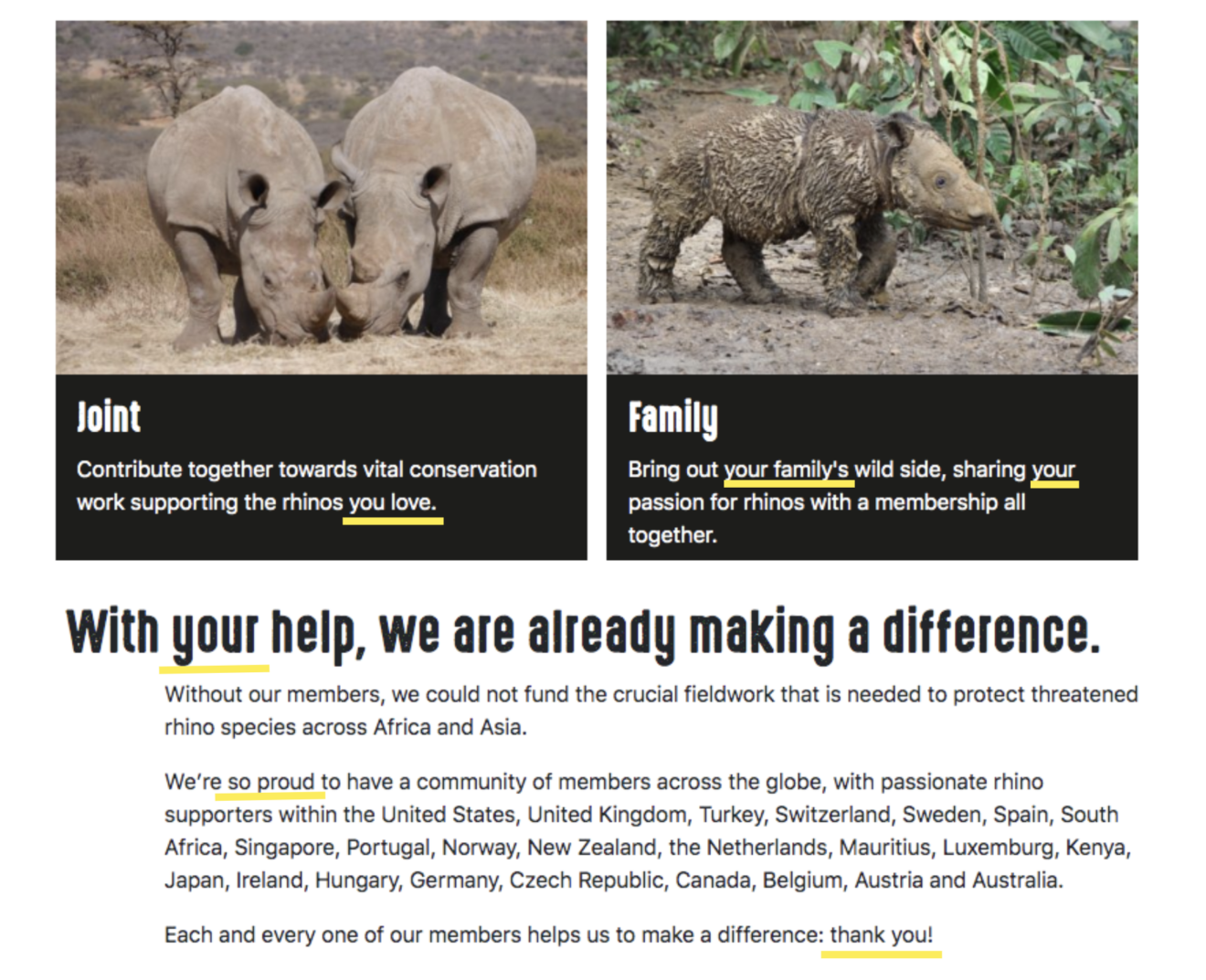
Anna Corbett
Director of Client Success
Anna is responsible for all client delivery, and is our resident data and analytics lead.

On 23rd July, I delivered a talk at BrightonSEO all about persuasion in search, exploring how - and why - you should harness the power of psychology in SEO. Read all about it here.
On 23rd July, I delivered a talk at BrightonSEO (virtually this time round!) all about persuasion in search, exploring how (and why) you should harness the power of psychology in SEO. By leveraging a range of persuasion techniques in your content and other areas, you can encourage more people to visit your site and engage with your business.

If you missed the talk at BrightonSEO or wanted a recap on the main points covered in my session, here are the key takeaways:
You don’t hear much about psychology or user semantics in search. That’s often because we’re guilty of having a Google centric mindset, as they’re always thinking about optimising content for Google’s algorithms, rather than putting the user at the centre of our work.
But by keeping up with ever-evolving complexity of searches, rather than search engines, we’ll get to understand users better. And the better we understand users and their search intent, the easier it will be to create valuable, effective content for them.
Knowing the searcher’s intent for your search terms is absolutely crucial to this process, so make sure you do your intent research, like looking at modifiers and what the search results tell you about implied intent, before you begin.
Here are some helpful reads on search intent to help you get started:
Search behaviour is often not logical. Understanding cognitive biases and using them to our advantage can influence what searchers click on the search engine results page (SERP), how they engage with your content and convert.
Let’s take a look at a few types of cognitive biases and how you can work with them:
Analysis paralysis describes a process when overthinking a situation can cause decision-making to become “paralyzed”, meaning that no course of action is decided upon.
That’s why Google search results have increasingly more visual features, to try and grab the searcher’s attention. Where possible, use schema markup (structured data that helps search engines better understand what your website is about) to supplement your result snippet to stand out against the competition.
Anchoring makes the first result searchers see the benchmark of everything that follows. Knowing the search landscape (consider ads, featured snippets, competitor results) is key to understanding how your user might interact with your content, and whether they have inadvertently set a benchmark already.
A study by Moz showed that, on a search results page, “featured snippets actually attracted the most fixations”, and they were also clicked the most, with 66% of users clicking on average.
So, if you want to become the benchmark, consider going after the featured snippet, as that is very likely the first thing searchers will see.
The bandwagon effect is a phenomenon whereby the rate of uptake of beliefs, ideas, fads and trends increases the more that they have already been adopted by others.
We’re likely to choose something based on how many others have also chosen it. It’s all about authority and our desperate subconscious desire to fit in.
Phrases like “the popular choice”, “an amount of others liked this” or “join thousands of happy customers” can work wonders in your meta descriptions.
You can also get clever here and use the bandwagon effect in your Google My Business posts to add another aspect of social proof.
You can use a range of persuasive techniques on your pages to encourage your visitors to take action on your website. This could be on informational pages, local pages, lead generation pages and transactional pages. Here’s how:
A context effect is an aspect of cognitive psychology that describes the influence of environmental factors on one’s perception of a stimulus.
So, great content won’t do the trick if you neglect to consider the usability of your site. Page speed, time to interact and general site design (without annoying pop ups!) are crucial factors. If your visitors find your site appealing they are more likely to remember it and return.
After noticing something for the first time, there is a tendency to notice it more often, leading to the belief it has a high frequency of occurrence. This is frequency illusion.
We react better to things we feel we have already seen. Make the most of this bias by repurposing your content in various ways. Be careful to not overdo it, but establishing a sense of “ah I have heard about that” can really build trust with your audience.
You can leverage mimicry – the act of imitating something or someone – to immediately build trust with your audience. By using their language, whether that’s their tone of voice or a turn of phrase, your audience will instantly feel a sense of ease and favourability towards you.
Do this by scraping wording used in forums, reviews, and other forms of user generated content to use in your site content, especially in meta descriptions, headings and intro paragraphs.
The Barnum effect is a psychological phenomenon whereby individuals give high accuracy ratings to descriptions of their personality that supposedly are tailored specifically to them, that are in fact vague and general enough to apply to a wide range of people. Basically, this means we believe that descriptions apply specifically to us even though they were written pretty generically.
You can achieve the Barnum effect and take advantage of the perceived personalisation in your writing by addressing your visitors directly using “I”, “we” or “you”, like Save The Rhino does so well here.

The decoy effect is the phenomenon whereby consumers will tend to have a specific change in preference between two options when they’re also presented with a third option that’s asymmetrically dominated.
Generally, if we’re presented with two options, we have a hard time choosing between the two. By adding a third – a decoy – it helps to mitigate this cognitive bias and ultimately make decision making easier. It’s the power of three explained.
In cognitive psychology, loss aversion refers to people’s tendency to prefer avoiding losses to acquiring equivalent gains. It’s better to not lose £5 than to find £5, for example.
Loss aversion taps into our fear of missing out. How can you recreate this on your website? Make use of timers, countdowns or limited availability messaging.
Trust plays a huge game in the world of online experiences. Consumers must feel confident in your product, brand, or service before taking action. Trust bias is where we remind the user why they should trust us.
Start off with actually being trustworthy, then use star ratings, testimonials, reviews and the likes to reinforce this sense of trust, like Etsy does here.

Nice hat!
I hope you have learnt a thing or two about how to use psychology to improve engagement within your search snippets and your on page content.
You can download the slides from my BrightonSEO talk in their entirety here or watch the replay if you’re registered on the BrightonSEO website here.

Director of Client Success
Anna is responsible for all client delivery, and is our resident data and analytics lead.
View my other articles and opinion pieces below
Google’s Performance Max just got a major upgrade. Anna Corbett breaks down how new channel-level reporting helps you make smarter, data-driven decisions about your ad spend.

Base Creative’s Anna Corbett explains how we use AI to boost campaign performance, from analytics to client conversations – without losing the human touch.

On 1st July, Universal Analytics will stop processing data. UA will be permanently replaced by Google’s new reporting platform, Google Analytics 4. To help you prepare for this transition, we have compiled all of our GA4 information into one place, ranging from guides to FAQs and deep-dives into specific features including cookie-less tracking, API quotas […]

Imagine your next digital marketing campaign. Your mind probably went straight to what you’d like to achieve. Maybe you want to: This is where you need to ask “why?” Why do you want to increase your paid ad conversions? Why does your CEO need more followers? Why do you want more site visitors? “What do […]
